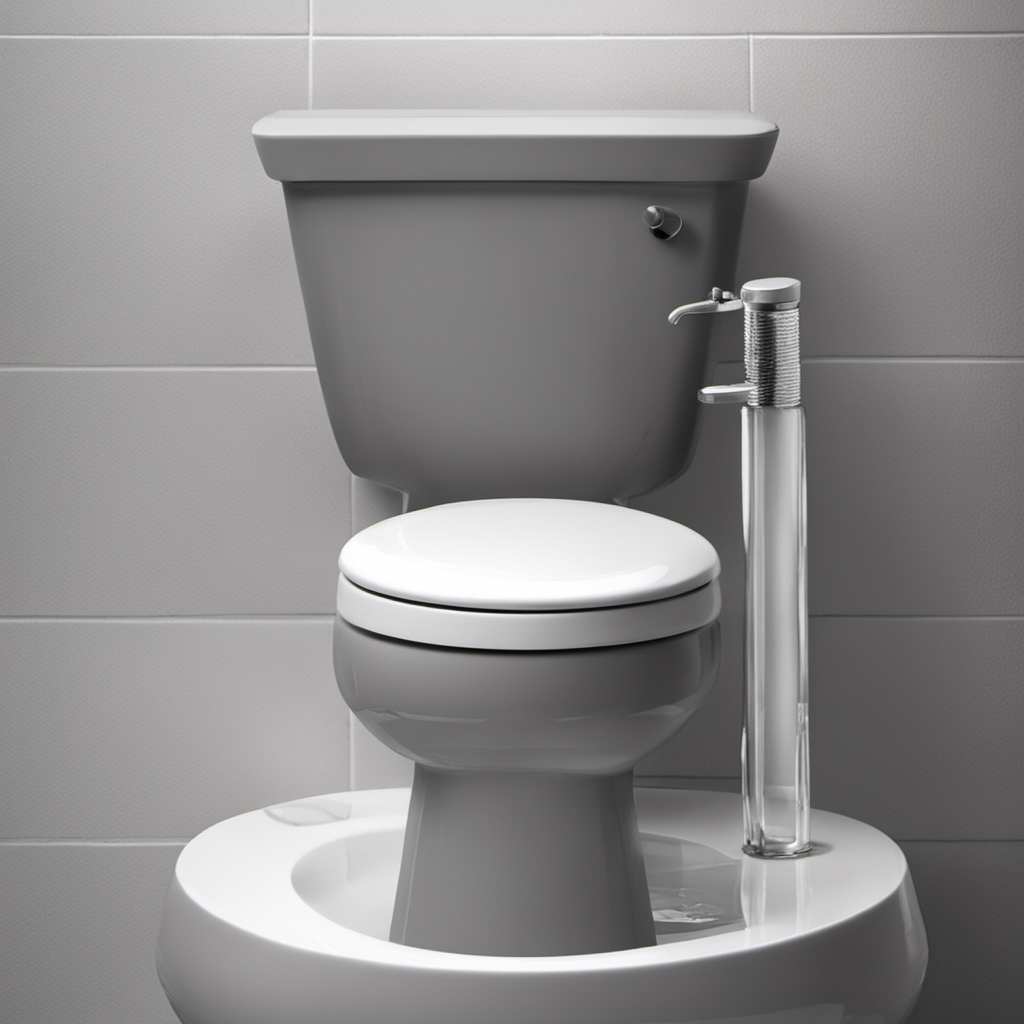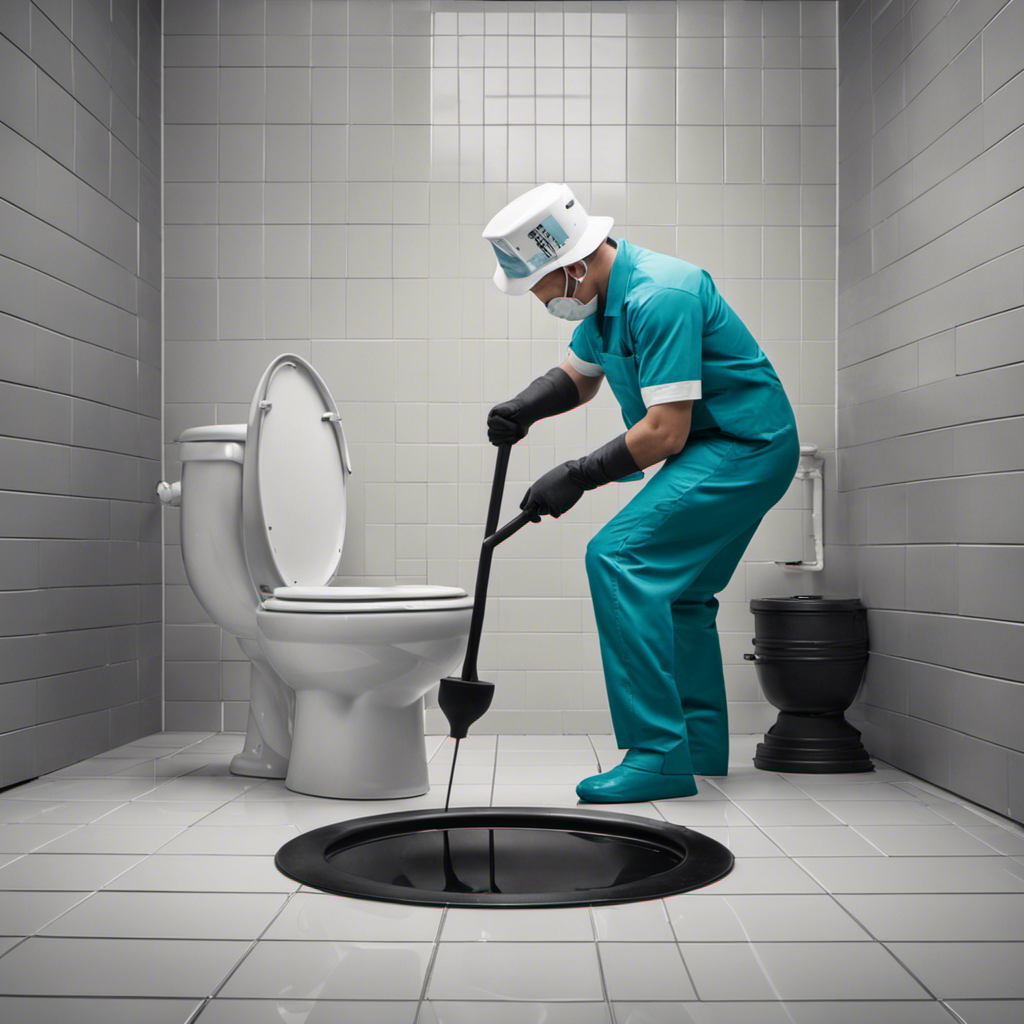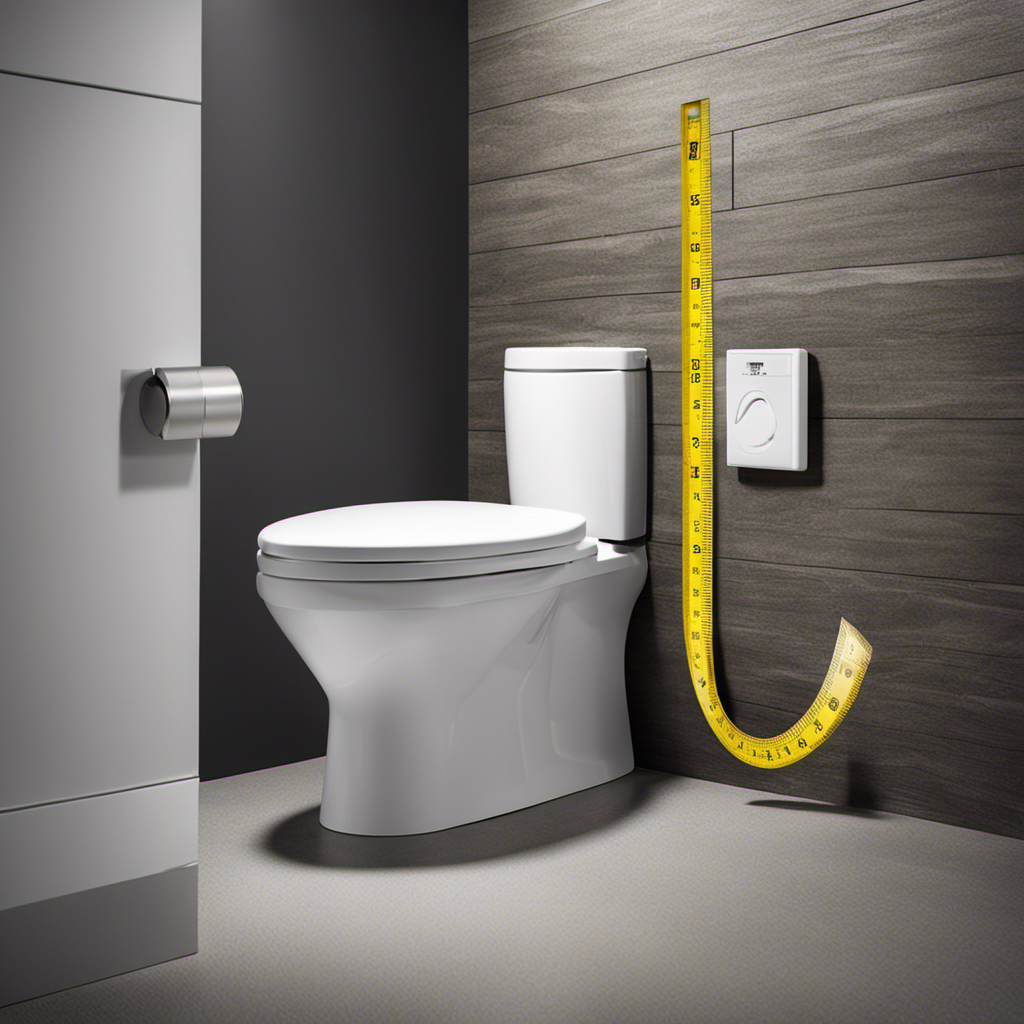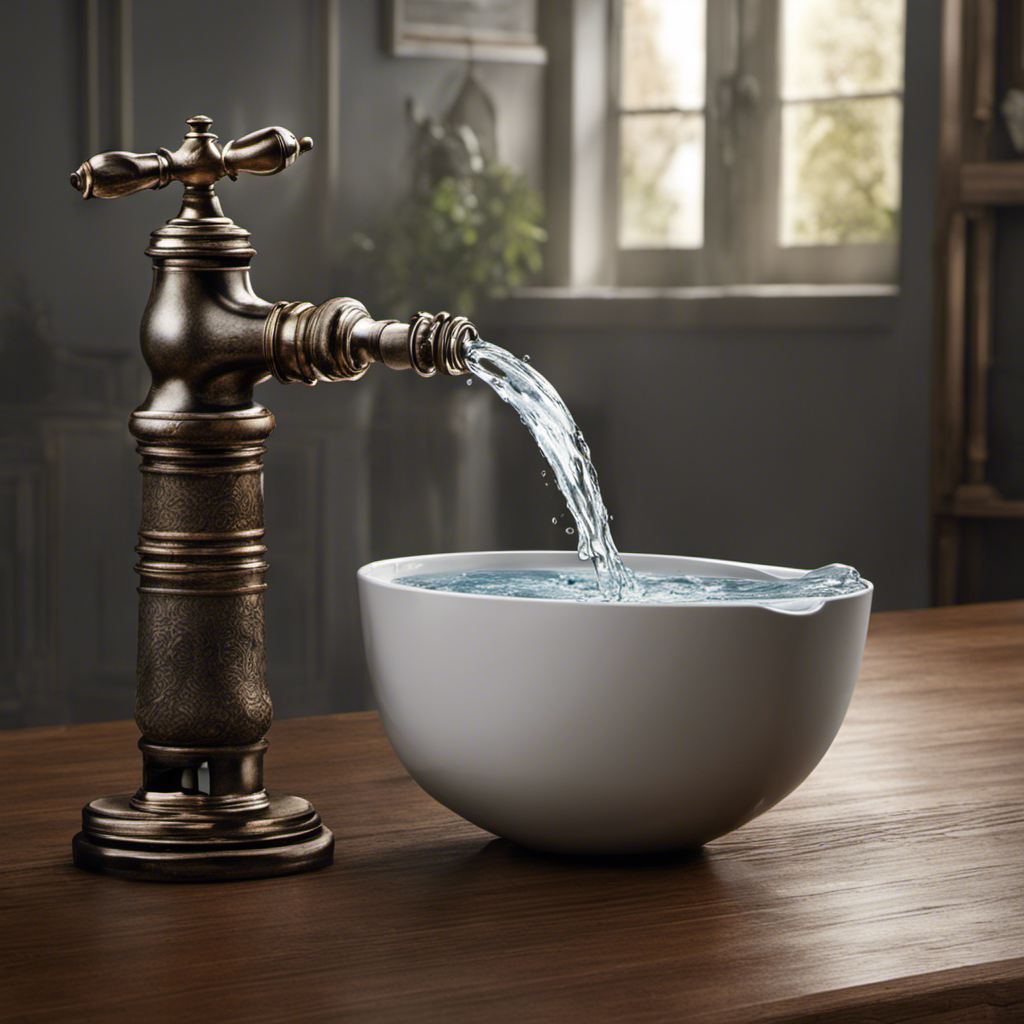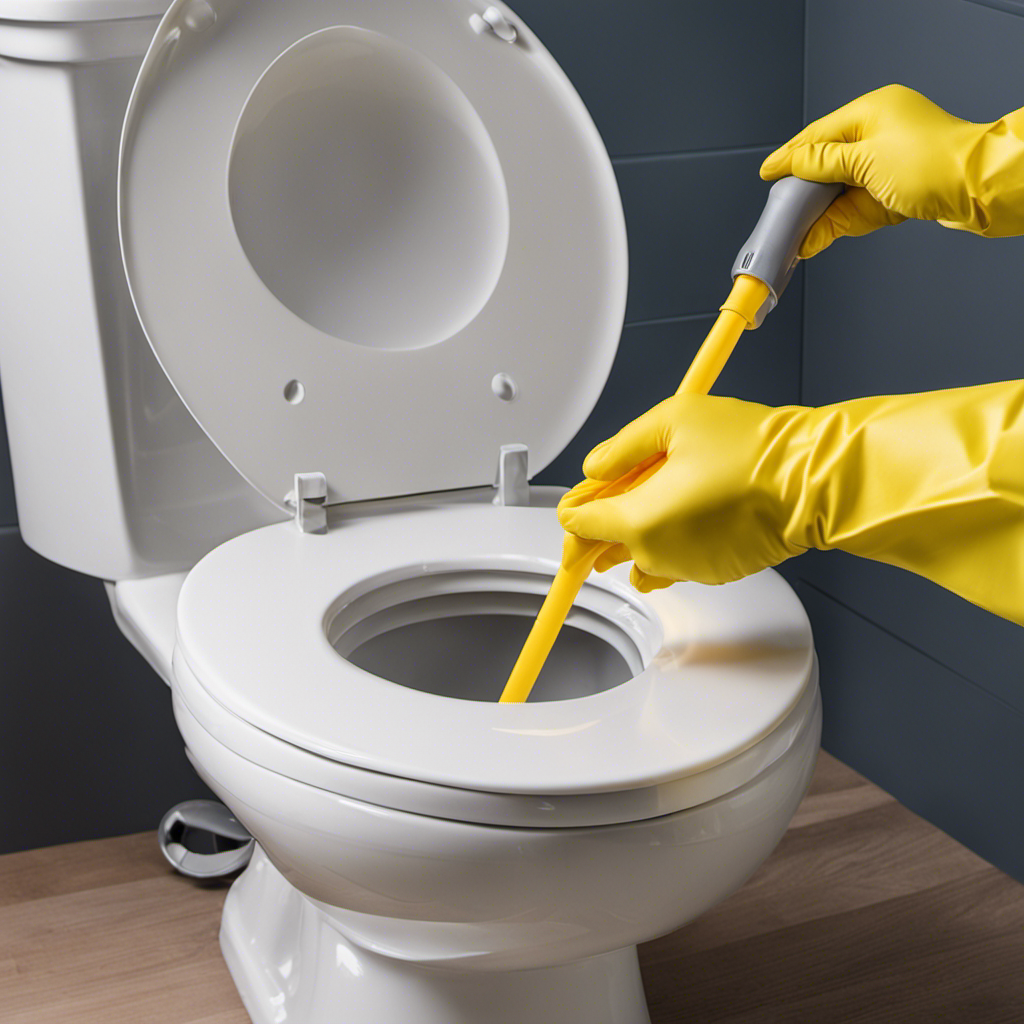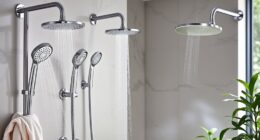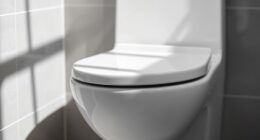So, you’ve found yourself in quite the predicament, huh? A clogged toilet can really put a damper on your day. But fear not, my friend, for I have the knowledge and practical tips to help you open that stubborn clog.
In this article, I’ll guide you through the process step by step, providing you with the necessary tools and techniques to get the job done.
So, grab your plunger and let’s dive right in!
Key Takeaways
- Excessive toilet paper, feminine hygiene products, baby wipes, and small toys are common causes of toilet clogs.
- Gather necessary tools and supplies such as a toilet plunger, toilet-specific drain cleaner, and rubber gloves.
- Attempt the plunger method by firmly pressing down and pulling up quickly, or consider using a toilet auger or snake for stubborn clogs.
- If simple methods fail, calling a professional plumber may be necessary, especially if there are persistent clogs, foul odors, slow drainage, or water leakage around the toilet base. Regular toilet maintenance can help prevent serious plumbing issues.
Identifying the Cause of the Clog
To determine the cause of the clog, it’s important to first understand what may have been flushed down the toilet. Common clog culprits include excessive toilet paper, feminine hygiene products, baby wipes, and even small toys.
If you notice water rising to the brim when you flush the toilet, or if the water drains slowly or not at all, these are signs of a serious clog. Another sign is when the toilet gurgles or bubbles after flushing.
It’s important to address a clog as soon as possible to avoid any further damage to your plumbing system. By identifying the cause of the clog, you can take the appropriate steps to open the toilet and restore proper flushing.
Gathering the Necessary Tools and Supplies
First, you’ll need to gather all the tools and supplies you’ll need to fix the problem. Here are three essential items that will help you tackle the clogged toilet with confidence:
-
Toilet plunger: A trusty plunger is a must-have tool for unclogging toilets. It creates suction and pressure to dislodge the blockage and restore proper flow.
-
Drain cleaner: Sometimes, using a drain cleaner can be effective in breaking down stubborn clogs. Look for a product specifically designed for toilet use and follow the instructions carefully.
-
Rubber gloves: While not a tool, wearing rubber gloves is essential for hygiene and protection. They will shield your hands from any potential mess and ensure a sanitary working environment.
Remember to use these tools responsibly and follow any safety precautions mentioned on their packaging. With the right tools and a little elbow grease, you’ll be able to fix that clogged toilet in no time!
Attempting Plunger Method
Now you can give it a try by firmly pressing the plunger down and pulling it up quickly to create suction. This method is effective in most cases of minor toilet clogs.
If the plunger method doesn’t work, there are a few plunger alternatives you can consider. One option is using a toilet auger or snake, which is a flexible tool designed to reach deeper into the pipes and break up stubborn clogs.
Another alternative is using a homemade drain cleaner mixture of baking soda and vinegar. This combination can help dissolve the clog and clear the blockage.
Remember, prevention is key to avoiding future clogs. Regular maintenance and being mindful of what goes down the toilet can help prevent future clogging issues.
If these methods don’t work, it may be time to call a professional plumber.
Using a Toilet Auger or Snake
If you’ve tried the plunger method without success, a toilet auger or snake can be a useful tool to break up stubborn clogs. These tools have their own advantages and can provide effective alternatives to unclog your toilet.
Here are some benefits of using a toilet auger:
-
Effective unclogging: A toilet auger is designed to reach deep into the drain and break up stubborn clogs, allowing for proper water flow.
-
Prevents damage: Unlike plungers, toilet augers are less likely to cause damage to the porcelain or pipes, making them a safer option.
-
Easy to use: With a simple twist and push motion, a toilet auger can be used by anyone, even those without much plumbing experience.
While a toilet auger is a great option, there are also alternatives like toilet snakes that can be used to remove clogs. These tools can provide the extra assistance needed when the plunger method falls short.
Calling a Professional Plumber
When you’re unable to resolve the issue on your own, it may be necessary to call a professional plumber. While unclogging a toilet can often be done with simple tools and techniques, there are instances where a more serious plumbing issue may be at play. Regular toilet maintenance is crucial in preventing these issues from arising in the first place. Here are some signs that indicate a more serious plumbing problem:
| Importance of regular toilet maintenance | Signs of a more serious plumbing issue |
|---|---|
| Regularly inspecting the toilet for leaks | Persistent clogs that don’t resolve with basic methods |
| Checking water levels and adjusting | Foul odors coming from the toilet or surrounding areas |
| Cleaning the bowl and jets regularly | Slow drainage or gurgling sounds when flushing |
| Ensuring proper flushing mechanisms | Water leakage or damage around the toilet base |
Conclusion
So there you have it, folks! After identifying the cause of the clog and gathering the necessary tools and supplies, we attempted the trusty plunger method and even gave the toilet auger a spin.
But remember, sometimes it’s best to leave it to the experts. When all else fails, don’t hesitate to call a professional plumber. They’ll have the know-how and experience to tackle even the most stubborn of clogs.
As they say, when life hands you a clogged toilet, call in the cavalry!
